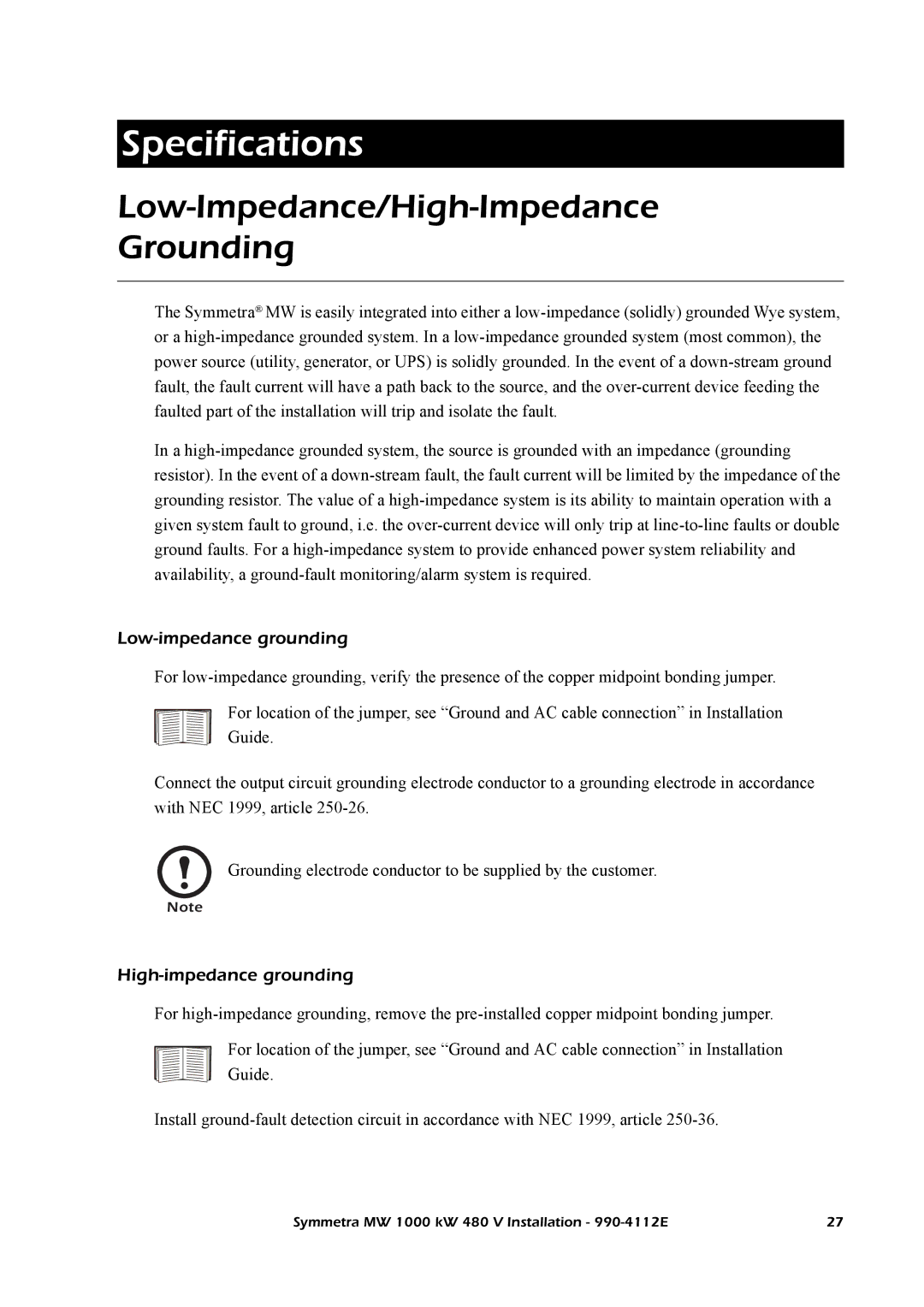Specifications
Low-Impedance/High-Impedance
Grounding
The Symmetra® MW is easily integrated into either a low-impedance (solidly) grounded Wye system, or a high-impedance grounded system. In a low-impedance grounded system (most common), the power source (utility, generator, or UPS) is solidly grounded. In the event of a down-stream ground fault, the fault current will have a path back to the source, and the over-current device feeding the faulted part of the installation will trip and isolate the fault.
In a high-impedance grounded system, the source is grounded with an impedance (grounding resistor). In the event of a down-stream fault, the fault current will be limited by the impedance of the grounding resistor. The value of a high-impedance system is its ability to maintain operation with a given system fault to ground, i.e. the over-current device will only trip at line-to-line faults or double ground faults. For a high-impedance system to provide enhanced power system reliability and availability, a ground-fault monitoring/alarm system is required.
Low-impedance grounding
For low-impedance grounding, verify the presence of the copper midpoint bonding jumper.
For location of the jumper, see “Ground and AC cable connection” in Installation Guide.
Connect the output circuit grounding electrode conductor to a grounding electrode in accordance with NEC 1999, article 250-26.
Grounding electrode conductor to be supplied by the customer.
Note
High-impedance grounding
For high-impedance grounding, remove the pre-installed copper midpoint bonding jumper.
For location of the jumper, see “Ground and AC cable connection” in Installation Guide.
Install ground-fault detection circuit in accordance with NEC 1999, article 250-36.

